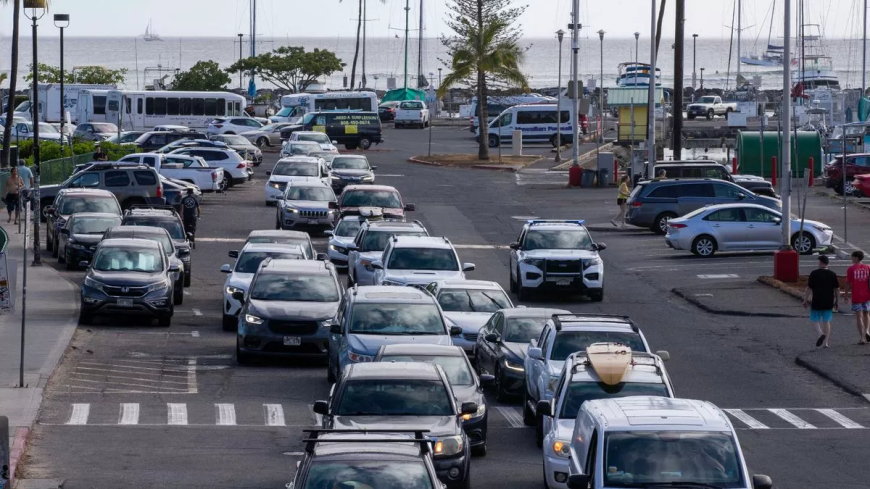Tsunami Alert Triggers Mass Evacuations in Japan After Catastrophic Pacific Earthquake
A magnitude 8.8 earthquake off Russia’s Pacific coast prompted tsunami warnings and evacuation orders for nearly 2 million residents across over 220 Japanese municipalities. Authorities faced a race against time to protect coastal communities amid heightened aftershock and wave risks.

Introduction: A Sudden Disaster Frenzy Unfolds
On the evening of July 30, 2025, a massive magnitude‑8.8 earthquake struck off Russia’s Kamchatka Peninsula, triggering widespread tsunami alerts across the Pacific Rim. In Japan alone, the Fire and Disaster Management Agency ordered evacuation of nearly two million residents in over 220 municipalities from Hokkaido to Honshu. The scale and scope of the evacuation underscored Japan’s preparedness—but also the immense peril facing coastal populations in the Pacific era.arXiv+15South China Morning Post+15New York Post+15
The Quake: A Pacific Giant Emerges
Detected early Wednesday local time, the quake originated at a relatively shallow depth of under 20 km, amplifying its tsunami-generating potential. Experts compared its intensity to the magnitude 9.0 Tōhoku quake of 2011. Waves upwards of three metres were predicted to funnel toward Japan’s coastlines—with Russia’s Kuril Islands seeing surges from 3 to 6 metres in height.South China Morning PostAP News
Strong tremors and rapid aftershocks—some nearing magnitude 6.9—rocked the region. In Severo-Kurilsk, tsunami waves reached up to 13 feet, flooding port areas and sweeping vessels from moorings.The Guardian+4Reuters+4AP News+4
Evacuations and Public Response in Japan
Japan’s J‑Alert system, a satellite-based network, triggered sirens, mobile alerts, and national broadcasts within seconds. Local authorities urged residents to seek higher ground immediately. Despite recorder temperatures nearing summer highs, evacuees followed the instructions with calm precision.WikipediaABC
Nearly 2 million people across 229 municipalities were mobilized—shifting into shelters, hilltops, and rooftops. Some evacuated to factory premises or airport structures, including the sensitive areas near Fukushima nuclear plant, where precautionary shutdowns were enacted.cbsnews.comABC
Why Japan’s Preparedness Worked
Japan’s rigorous disaster education and frequent drills—including tsunami evacuation exercises—appeared to pay off. Residents in Hokkaido and Tōhoku executed evacuation protocols with minimal panic, reflecting lessons from the 2011 tragedy.ABC
Despite the scale of the alert, early reports indicated no major casualties or structural damage in Japan. Only one reported fatality occurred during evacuation, when a driver reportedly lost control while en route to higher ground.WikipediaABC
Ripple Effects Across the Pacific
Beyond Japan, the earthquake prompted warnings and evacuations across Hawaii, Alaska, the U.S. West Coast, and Pacific island nations including French Polynesia, Samoa, Ecuador’s Galápagos, and Chile’s Easter Island. In Hawaii, waves up to six feet triggered island-wide evacuations and major traffic snarls in Honolulu.The Guardian+1New York Post+1
California’s Northern coast from Crescent City to Cape Mendocino witnessed 3–4 foot surges, prompting advisories to avoid beaches and coastal roads, though the highest risks subsided with time.cntraveler.com+1New York Post+1
By midday, warnings were downgraded in Hawaii, Alaska, and parts of Japan—yet authorities remained cautious about secondary wave follows, as tsunami behavior can intensify hours after the initial tremor.AP News
Japan’s Emergency Protocols in Action
Thanks to J‑Alert, the emergency broadcast system can disseminate warnings within 4 to 20 seconds of detection. Local authorities simultaneously activated evacuation protocols that had been ingrained through years of community-level drills.WikipediaABC
Evacuation centers opened rapidly—schools, community halls, and city buildings transformed into temporary shelters. Emergency teams used loudspeakers to direct residents, and public transport was temporarily halted in vulnerable coastal zones.ABCcbsnews.com
Historical Context: Lessons from 2011 and Earlier
The Tōhoku disaster of 2011 remains a painful memory in Japan’s collective consciousness: over 346,000 people displaced, thousands dead, and major infrastructure destroyed by 10 m tsunami surges. Only 58% of residents responded promptly to evacuation instructions, leading to tragic consequences in towns like Okawa Elementary School.Wikipedia
In contrast, Wednesday’s response reflected a more disciplined culture of disaster preparedness. Observers credited improved J‑Alert systems, mandatory school drills, and strong civic education as primary drivers.WikipediaABC
Disaster Preparedness: What Makes Japan a Global Model
Japan’s approach emphasizes three pillars:
-
Technological readiness: Automated alerts via J‑Alert ensure fast, reliable warnings.
-
Community participation: Wide-scale drills, including school-based programs, create muscle memory for evacuation behavior.
-
Institutional coordination: From municipal offices to military and academic research centres, agencies collaborate seamlessly to update warnings and manage shelters.WikipediaABC
These systems have evolved significantly since past disasters, enabling authorities to manage both information and infrastructure under pressure.
Public Reaction: Calm Strength Paired with Human Resilience
Across social media and local forums, the dominant sentiment was pride in Japan’s collective poise. Tweets featured shelter selfies, posted code of conduct guides, and gratitude to emergency workers who guided elderly or disabled evacuees.
Elsewhere, footage from a hospital operating room showed surgeons continuing a cancer operation amid tremors—unflinching even as equipment shifted. This surreal endurance became a symbol of resolve.The Sun
What Happens Next: Ongoing Risks and Aftermath
While the worst of the tsunami threat appears to have passed, authorities warned that waves may continue for up to 24 hours, as pulses reflect off underwater structures and landmasses. Aftershocks remain frequent and unpredictable.ABCAP News
Emergency teams are now assessing coastal infrastructure, ports, fishing harbors, and remote towns in the Kuril Islands and northern Japan. Russian authorities have declared states of emergency in the far east, with damage assessments underway.AP News
Conclusion: Japan’s Preparedness Holds Firm
Japan’s mass evacuations following an earthquake thousands of miles away epitomise how preparedness, public awareness, and swift technology can avert catastrophe. Nearly two million people made a collective decision—learned over time—to act without panic and prioritize survival.
As alerts across the Pacific recede, analysts note that Japan’s experience offers a model for disaster resilience—both in actions taken and in readiness built over decades. The humbling reminder: in the face of nature’s power, preparation saves lives.




















































